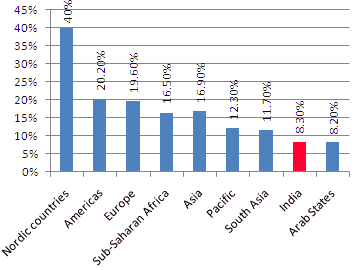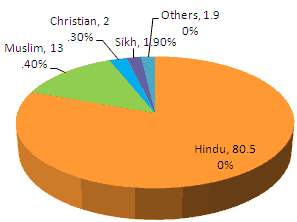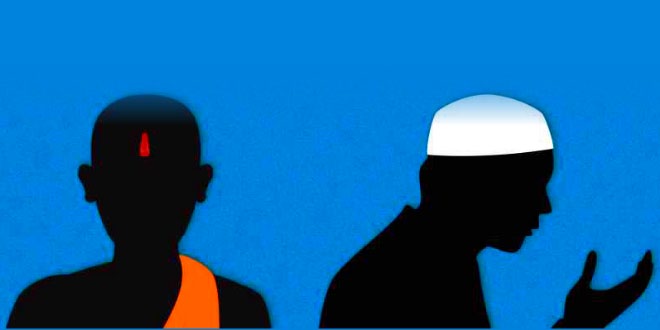NCERT 10th Class (CBSE) Social Science: Gender Religion Caste Quiz
23 Multiple Choice Questions related to NCERT 10th Class (CBSE) Social Science: Gender Religion Caste Quiz:
- A system in which all work inside the home is either done by the women of the family, or organised by them through the domestic helpers.
- Those laws that deal with family related matters such as marriage, divorce, adoption, inheritance, etc. In our country, different family law apply to followers of different religions.
- These routinely involves religious prejudices, stereotypes of religious communities and belief in the superiority of one’s religion over other religions.
Your Score:
Your Ranking:
Gender Religion Caste Quiz Summary
Sexual Division of Labour:
A system in which all work inside the home is either done by the women of the family, or organised by them through the domestic helpers.
Feminist Movements:
Various movements which are aimed at ensuring equal rights for women are called feminist movement.
Political expression of gender question helped a lot to improve women’s role in public life. Although the Indian society is still a patriarchal society, yet women are now working in many fields.
Women face disadvantage, discrimination and oppression in various ways:
- The literacy rate among women is only 54 per cent compared with 76 per cent among men.
- The percentage of women in highly paid jobs is still very small. At many workplaces, women are paid less than men for the same job. An Indian woman usually works more hour than an average man on a daily basis.
- Many Indian parents prefer to have a male child. A girl child is killed before her birth in many cases. This has led to an eschewed sex ratio in India.
- There are many reports of harassment against women; both on the domestic front and outside the home.
Women’s Political Representation:
The political representation of women had been very poor in the Indian legislatures. Even in the cabinet, the number of women ministers is very low.
One-third of seats in local government bodies have been reserved for women candidates. This has helped in increasing women’s representation in panchayats and municipalities.
A bill for providing one-third reservation in the Lok Sabha and State Assemblies has been pending in the Parliament for more than a decade. Political parties are yet to arrive at consensus on this issue.

Religion & Politics:
Religion also plays an important role in politics. In some countries, politicians promote the cause of the majority religious group at the cost of the minorities. This produces a dangerous trend of majority tyranny.
Communalism: When one religion is pitted against another; by the political class, this is called communalism or communal politics.
Communalism can take various forms in politics:
- Many people think of their religion as superior to all other religions. Such people often try to dominate the people from other communities. This can result in people from the minority community to form a separate political unit.
- Sometimes, sacred symbols, religious leaders, emotional appeal, etc. are used to instill a sense of fear among people of a particular community. This is done with an attempt to polarize people on communal lines.
- Communalism can also take the ugly form of communal violence, riots and massacre.

Secular State
- The Constitution of India declares that India is a secular state. Unlike some of the neighboring countries, there is no official religion for the Indian state.
- The constitution gives the people the freedom to practice a religion of their choice. The Constitution prohibits discrimination on grounds of religion.
- The Indian constitution, however, allows the state to intervene in the matters of religion whenever there is a need to ensure equality within religious communities.
Caste and Politics
Social division on the lines of caste is unique to India. The caste system of the present has evolved from the varna system which was based on occupations and on the principle that an occupation passed from one generation to another. Members of a particular caste usually have a sense of belonging to their own community. Some castes are accorded a higher status compared to many other castes.
Current Status of Caste Related Prejudice:
- Due to various socio-economic changes, social division on the basis of caste has been blurring in recent times. Economic development, large scale urbanization, literacy, occupational mobility and weakening of the position of landlords in villages have helped in blurring the caste-based divisions.
- Caste is still an important parameter when it comes to finalizing marriages. But in most of the other spheres of life, caste effect is apparently waning in India.
- People from the upper caste had traditionally better access to the education and hence they have done well in economic development. People from the oppressed castes are still lagging behind in socio-economic development.
Caste in Politics
- Most of the political parties keep the caste calculation in mind while fielding a candidate from a particular constituency.
- Each caste group is trying to get a bigger pie of the political power by asserting its identity in various ways.
- Since there are so many castes, hence various caste groups have also evolved their own coalition to get leverage in political bargaining.
- The caste groups can be broadly divided into ‘backward’ and ‘forward’.
- Exclusive attention to caste can produce negative results. Caste divisions often lead to social conflict and even violence.
Caste inequality today
- Economic inequalities exist on the basis of caste. The upper caste people are usually well off, the backward classes come in between and the dalits and adivasis are at the bottom.
- The percentage of people below poverty line is much higher among the lowest castes.
 Class Notes NCERT Solutions for CBSE Students
Class Notes NCERT Solutions for CBSE Students





